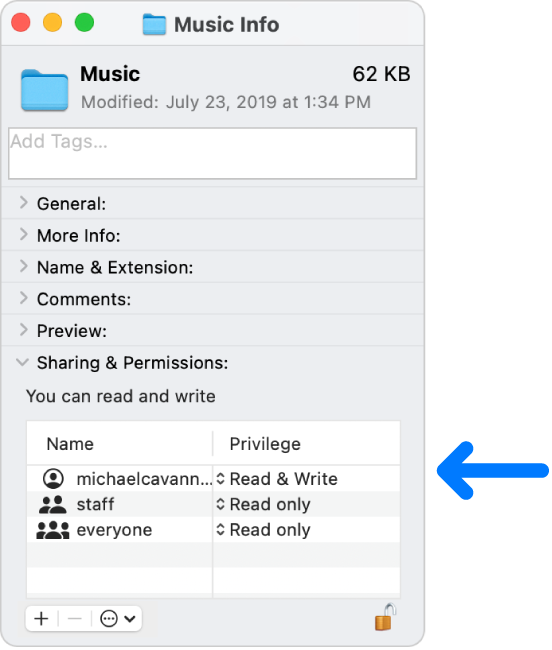
The External Hard Drive Shows Up as 'Read Only' on Mac, Help! Open Disk Utility > Select the external hard drive and click "First Aid" > Click "Run". Right-click external drive > "Get Info" > "Sharing & Permissions" > Check "Ignore ownership on.". The use of an equal sign ( =) wipes all previous permissions for that category.Open "Applications" > "Utilities" > Launch "Disk Utility" to "Erase" external drive > Restore formatted data. The u flag sets the permissions for the file owner, g refers to the user group, while o refers to all other users. To remove all existing permissions, set read and write access for the user while allowing read access for all other users, type: chmod u=rw,g=r,o=r file.txt To set file permissions, you’ll use the chmodcommand at the terminal. RELATED: How macOS Catalina's New Security Features Work Setting File Permissions This is related in part to new security features introduced in macOS Catalina, although file access control lists (ACLs) have been a Mac feature since macOS X 10.4 Tiger back in 2005. If the final character is an at sign ( then it signifies that the file or folder has extended file attributes relating to security, giving certain apps (like Finder) persistent file access. rwx means the file can be read, written, and executed.r-x means the file can be read and executed, but not written to.rw- would mean the file can be read and written to, but the file isn’t executable.


You’ll see letters here, too, such as r (read), w (write), and x (execute).

The first group shows the access levels for the file/folder owner (1), the middle group shows group permissions (2), and the final three shows permissions for any other users (3). The next nine characters are split into groups of three.


 0 kommentar(er)
0 kommentar(er)
